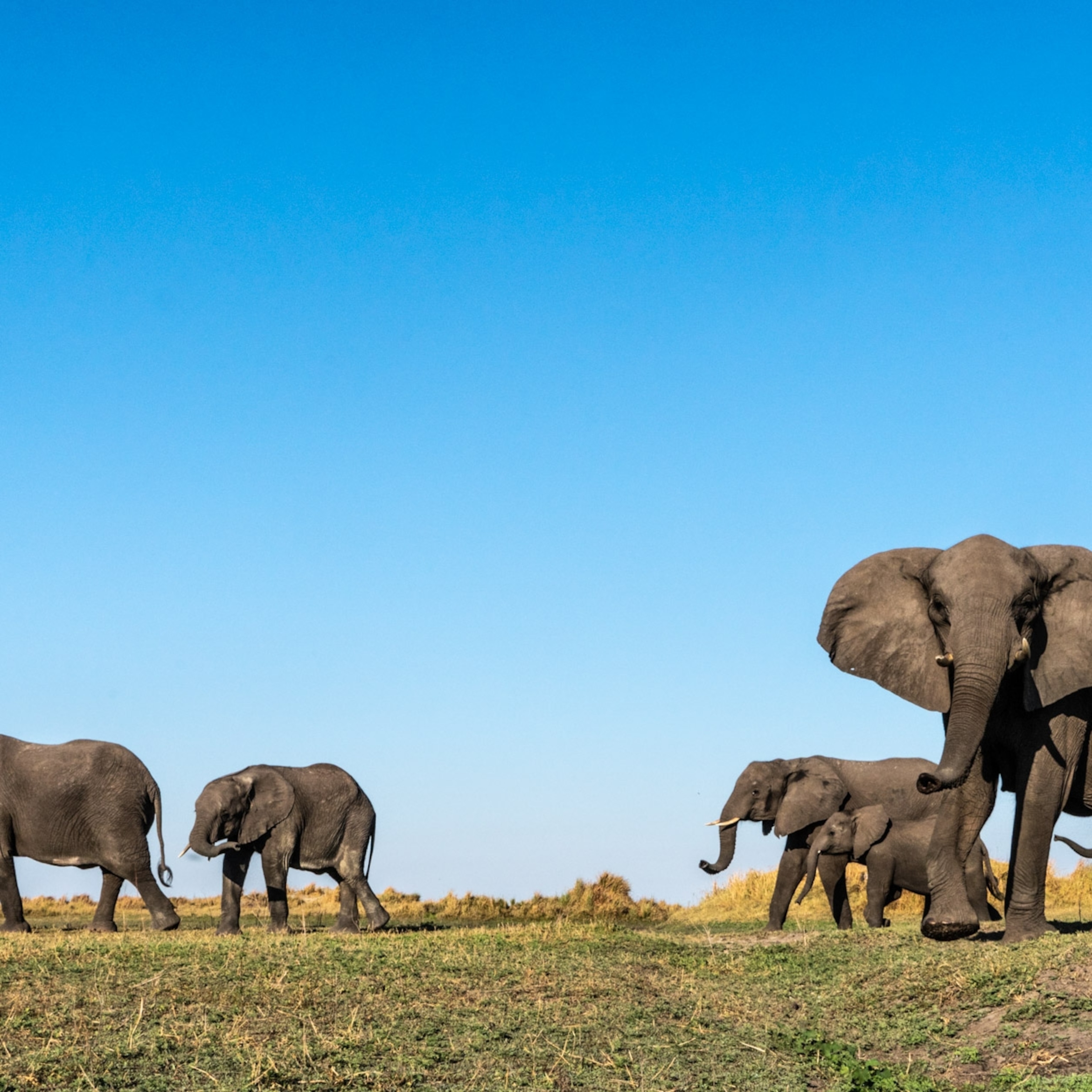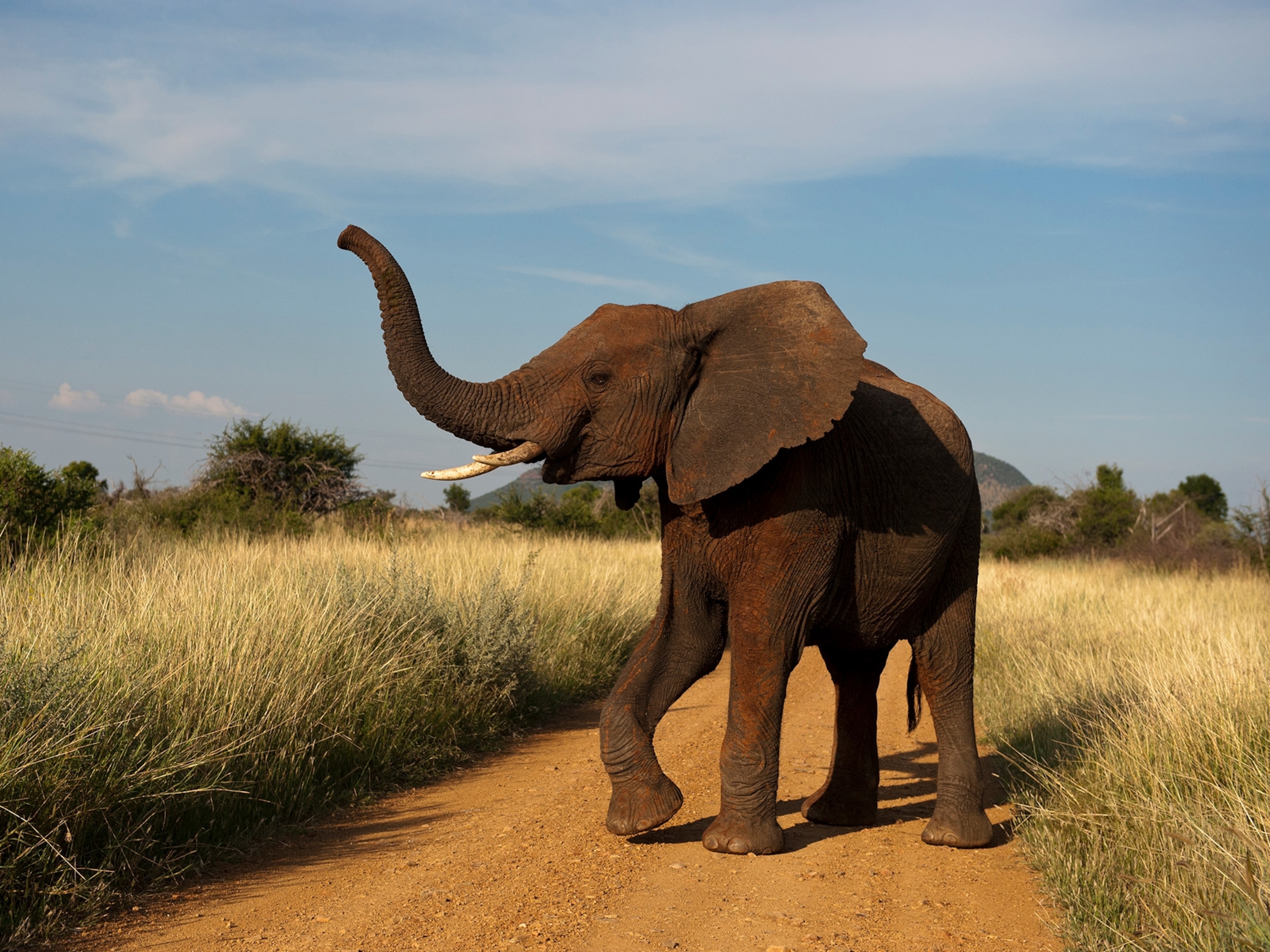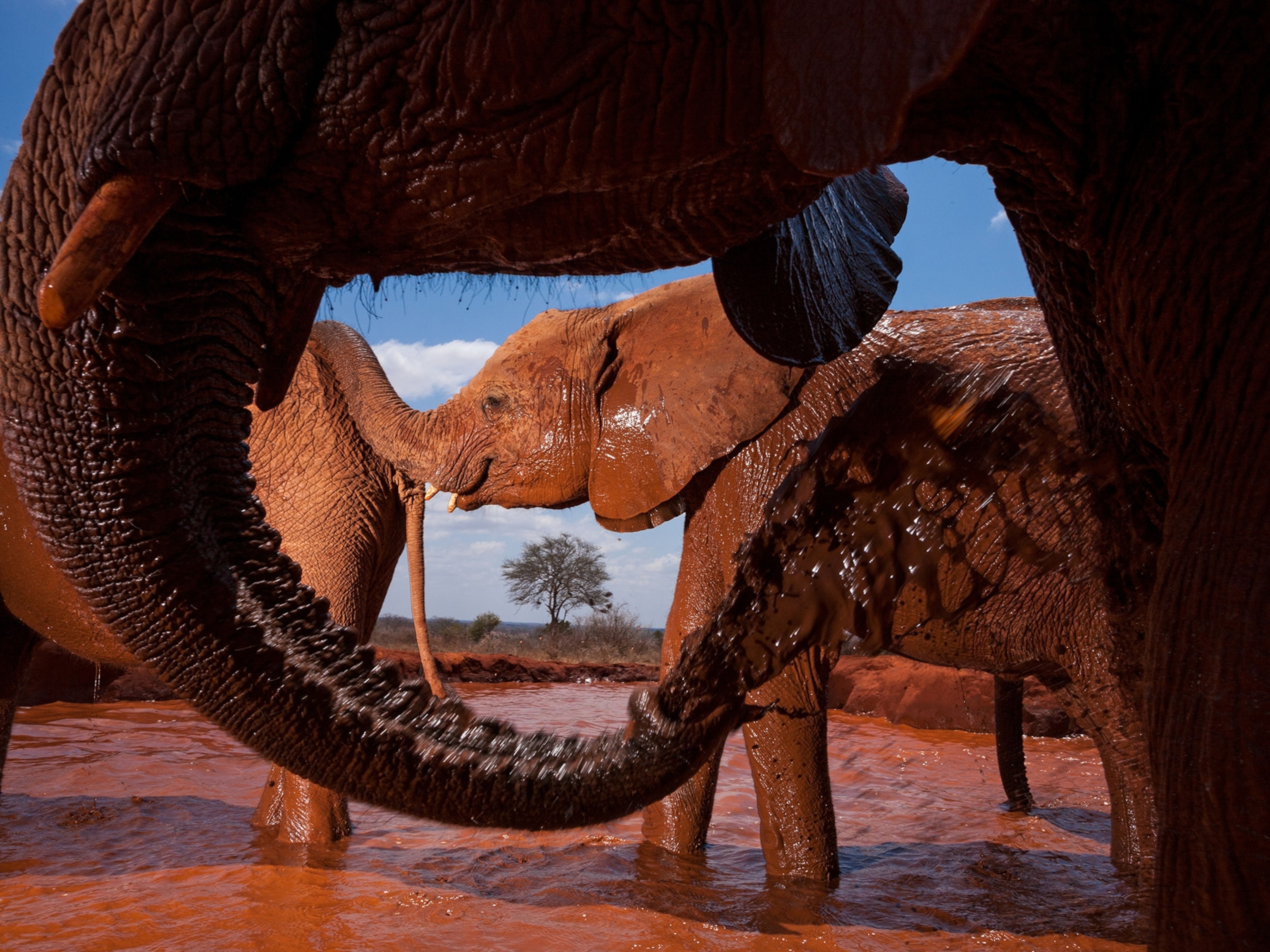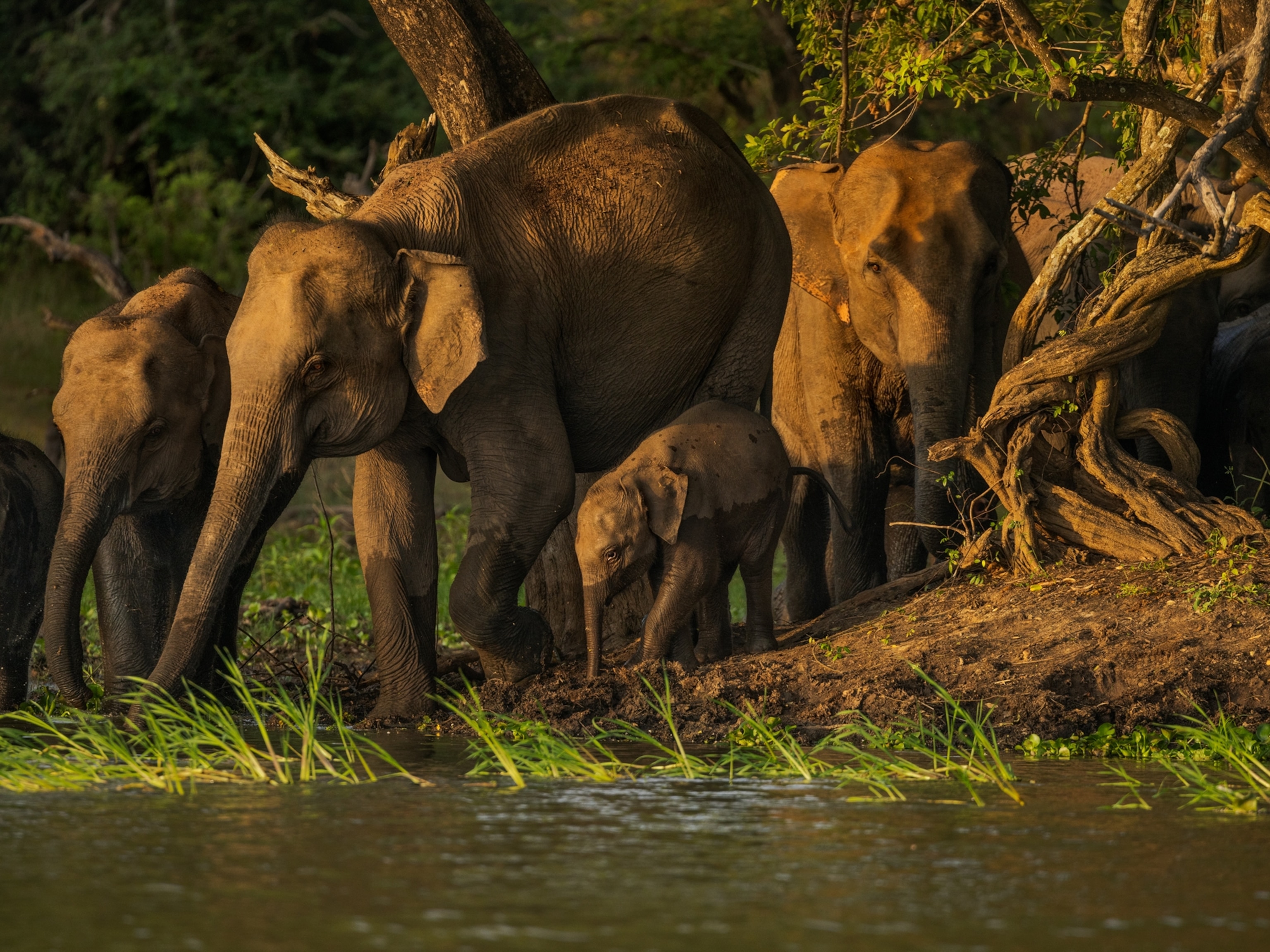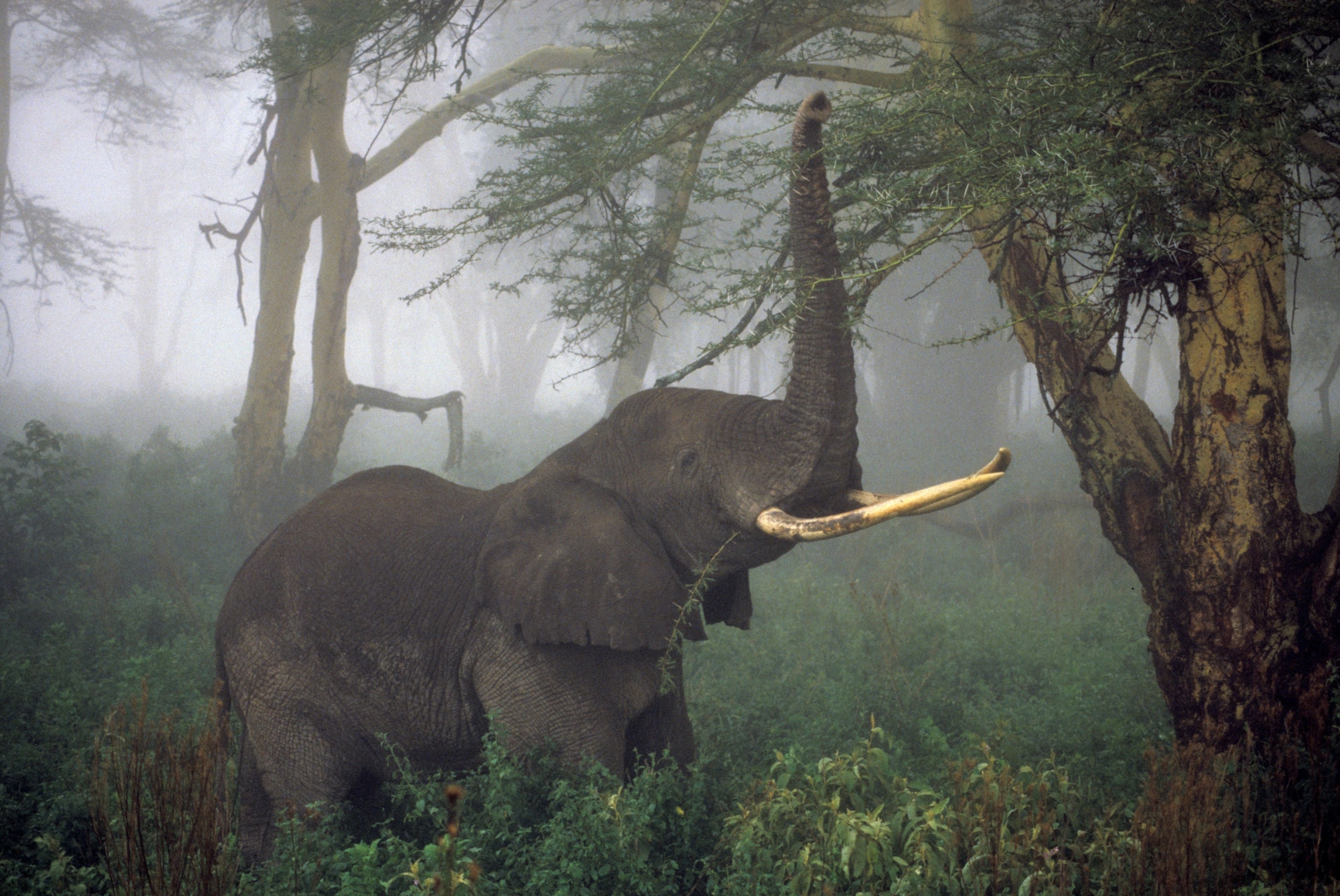
African Elephant Numbers Plummet 30 Percent, Landmark Survey Finds
An unprecedented census gives a sobering baseline for managing what’s left of Africa’s elephants.
The much anticipated results of the largest ever continent-wide wildlife survey, the Great Elephant Census, will be released tomorrow at the World Conservation Congress in Hawaii. The worrying finding: Africa now has 352,271 savanna elephants left in 93 percent of the species’ range.
The aerial survey covered 18 African countries. In 15 of those, where information on previous populations existed, 144,000 elephants were lost to ivory poaching and habitat destruction in less than a decade.
The current yearly loss—overwhelmingly from poaching—is estimated at 8 percent. That’s about 27,000 elephants slaughtered year after year.
Forest elephants, which live in central and West Africa, were excluded from the census because they’re nearly impossible to spot from the air. But a 2012 ground study indicates that these elephants too are highly threatened by poaching and habitat loss.
The census was funded by Microsoft founder Paul G. Allen and took just under three years to complete. Led by the nonprofit Elephants Without Borders, which is based in Botswana, the survey involved a team of 90 scientists, six NGOs, and two advisory partners: the Kenya-based conservation organization Save the Elephants and the African Elephant Specialist Group, made up of experts who focus on the conservation and management of African elephants.
The survey’s results, published in the journal PeerJ, couldn’t have come at a more important time.
Later this month elephants will be high on the agenda at the triennial meeting in Johannesburg, South Africa, of the Convention on International Trade in Endangered Species of Wild Fauna and Flora (CITES), the body that regulates international trade in certain threatened animal species. With poaching at such dire levels, the conference may be pivotal in setting a new direction for elephants.
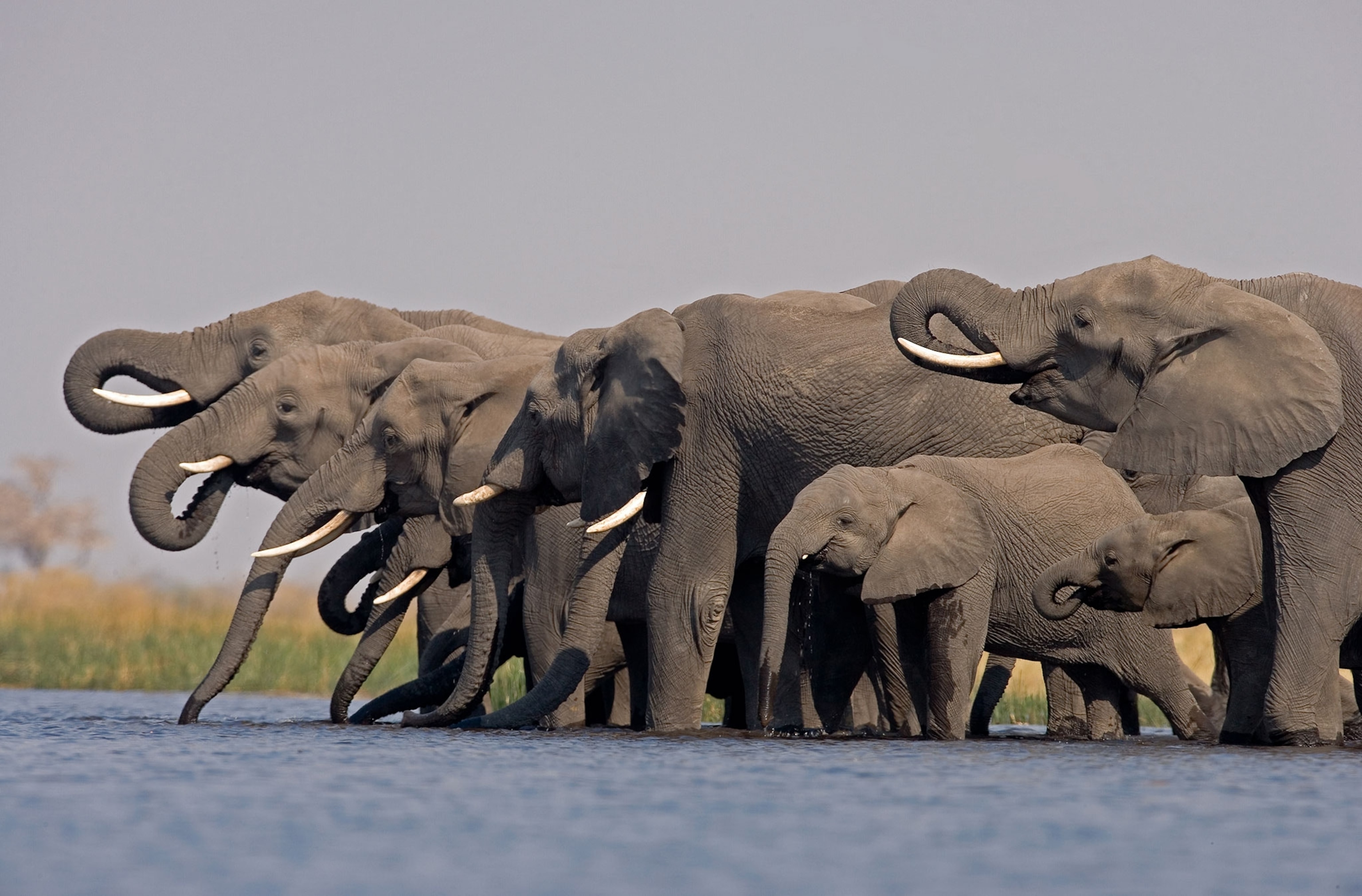
“I’m a big believer in the power of data to help inform decisions,” Paul Allen told National Geographic. “We have to make faster, smarter, better decisions about how and where we direct limited resources.” Allen says he’s already begun planning a ground-based survey of Africa’s forest elephants.
The Great Elephant Census is the most advanced and thorough assessment of elephant numbers ever. It was carried out by spotters in low-flying planes who peered out of either side of their planes to count the elephants below. Crisscrossing vast swaths of sub-Saharan Africa, they racked up a combined flying distance of 285,000 miles—the equivalent distance to the moon and a quarter of the way back.
Previous pan-African elephant surveys have been fairly crude. In 1969 Iain Douglas-Hamilton, a veteran conservationist and founder of Save the Elephants, undertook the earliest attempt at a continent-wide census using aerial counts and questionnaires. That survey estimated 1.3 million elephants, a disputed figure in conservation circles. A decade later experts suggested that the figure was about 600,000, highlighting a poaching crisis. Since then the exact trajectory of elephant numbers has been in question.
“For too long now, we’ve said that we don’t have precise, reliable estimates—that they’re speculative, they’re guess work,” says Mike Chase, the principal researcher for the census and the founder of Elephants Without Borders. The time for pleading ignorance about elephant numbers is over, he says. “We’re now armed with the most robust and accurate scientific data in history to give these animals a second chance.”
Paula Kahumbu, a Kenyan elephant ecologist and CEO of WildlifeDirect, a Nairobi-based conservation organization, believes that by providing an independent and scientifically robust assessment of elephants, the census will carry huge weight at the CITES conference. “Proposals will be considered on the basis of scientific fact,” Kahumbu says. “It’s vital that we have accurate data to inform policy.”
Crisis by the Numbers
While the overall elephant picture is bleak, it varies greatly from country to country and from ecosystem to ecosystem.
The countries with the greatest declines were Tanzania and Mozambique, with a combined loss of 73,000 elephants to poaching in just five years. Another shocking discovery was made in northern Cameroon, where survey teams could count no more than 148 elephants—along with many carcasses—revealing a tiny regional population in immediate danger of extinction.
By contrast South Africa, Uganda, parts of Malawi and Kenya, and the W-Arli-Pendjari conservation complex—the only area in West Africa with significant numbers of savanna elephants—were found to have stable or slightly growing herds.
Botswana remains the continent’s elephant stronghold, with 130,000 animals, concentrated along the Chobe and Savuti river systems in the north and in the vast wetland oasis of the Okavango Delta.
Zimbabwe showed the second highest number of elephants—83,000—mostly along the Zambezi River and in Hwange National Park. Overall, Zimbabwe’s population has dropped 10 percent since 2005.
Zambia recorded 20,839 elephants, an 11 percent decline during the past decade. But a regional population in the southwestern corner of the country has been terribly affected by poaching: The spotters tallied just 48 elephants in Sioma Ngwezi National Park, down from 900 in 2004. At the current poaching rate, this local population also faces imminent extirpation.
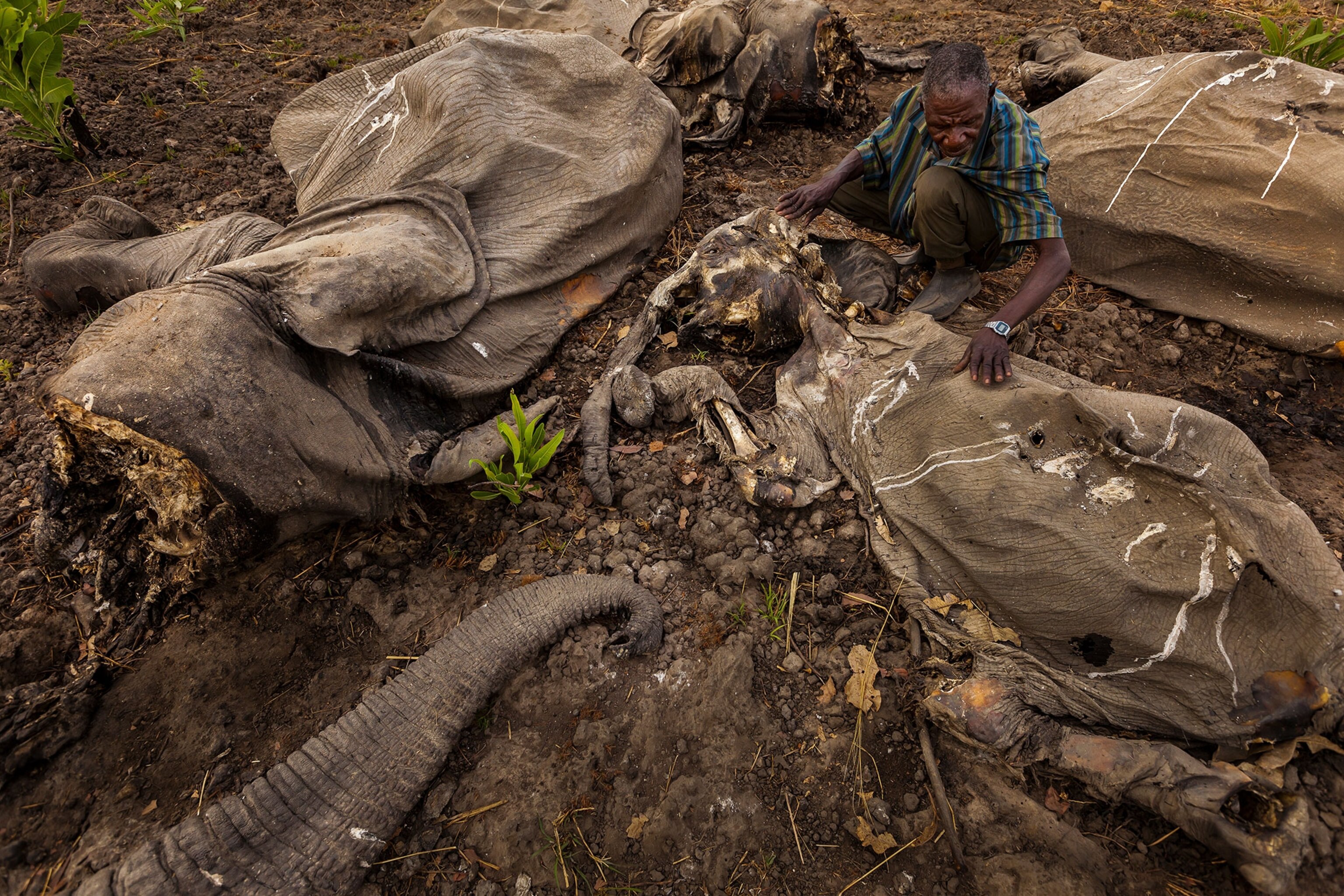
Angola too gave a shock. Once hoped to be a refuge for elephants after decades of civil war, it now has one of the highest poaching rates on the continent—leading to a 22 percent drop in elephant numbers since 2005.
Namibia was the only country with a significant elephant population that opted not to participate in the census. Wide-ranging surveys conducted there in 2015 yielded an estimate of nearly 23,000 elephants.
The spotters weren’t on the lookout only for live elephants. They also counted dead animals, because carcass numbers show the extent to which poaching and natural deaths contribute to declines.
By calculating carcass ratios—the percentage of dead elephants versus live elephants observed during the survey—the researchers could get a good idea of the health of a population. A ratio above 8 percent generally means a population is declining, and continent-wide the carcass ratio turned out to be nearly 12 percent.
What’s abundantly clear, Chase says, “is that the elephant poaching crisis has moved from East and central Africa and is now on our doorstep in southern Africa. You just need to look at southwest Zambia and southeast Angola, which have the worst rates of elephant poaching on the entire continent. And when elephants are removed from those systems, poachers will look to the stronghold of northern Botswana.”
Chase says the overall message of the survey is clear. Poaching is so intense “that in 10 years' time we could lose 50 percent of Africa’s remaining elephants.”
In the Hands of Governments
For more than a century, the ivory trade has been the fire that has fueled the killing of elephants. In 1989 CITES put in place a global ban on ivory trading that significantly stemmed poaching at first. But twice since then, in 1999 and 2008, some southern African countries were allowed to sell ivory from their stockpiles—sales widely believed to have boosted ivory demand in Asia and spurred poaching and ivory smuggling.
This year, two countries—Zimbabwe and Namibia—have put forward proposals to CITES to begin a legal and regulated trade in ivory. In reaction, 26 African nations with elephant populations, supported by other countries and numerous NGOs, have submitted a proposal to halt any trade in elephants and their products.
“No nation is an island,” says Phyllis Lee, of the University of Stirling, one of the authors of the proposal. Elephants don’t stick to political borders, she says, and some populations are shared by three or four countries at a time. Decisions made about elephants in one country can have huge repercussions on poaching in other countries.
Whatever comes of the wildlife trade meeting in Johannesburg this month, for the first time CITES and African countries that have elephants will have concrete information to determine the future conservation and management of elephants.
As Chase puts it, “We now have the first baseline for assessing whether we’re going to be successful, or if we’re going to fail the African elephant.”
Read more stories about wildlife crime and exploitation on Wildlife Watch. Send tips, feedback, and story ideas to ngwildlife@natgeo.com.


